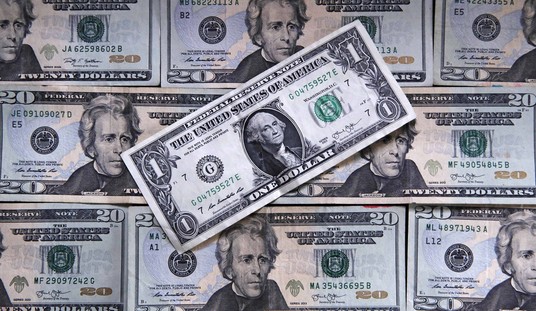How will history remember the presidency of Barack Obama?
In the budget message he sent Congress this week, Obama portrays himself as a president who led America back to economic good times.
"When I took office, our nation was in the midst of the worst recession since the Great Depression," Obama wrote. "The economy was shedding 800,000 jobs a month. The auto industry was on the brink of collapse and our manufacturing sector was in decline. Many families were struggling to pay their bills and make ends meet. Millions more saw their savings evaporate, even as retirement neared.
"But thanks to the grit and determination of the American people," Obama said, "we rescued our economy from the depths of recession, revitalized our auto industry, and laid down new rules to safeguard our economy from the recklessness of Wall Street."
So is Obama the architect of an economic renaissance? A champion of the working man? Is this what reasonable people a century from now will look back and see in the era of his presidency?
No. Nor should people see that now.
The truth is: Obama took office at a time when big-government liberalism had already put America on a downward trajectory. He not only kept this nation on that trajectory, he accelerated it.
It is now almost seven years since the last recession ended in June 2009. Is America seeing significant economic growth today? No. Has it seen significant economic growth in any year since the recession ended? No.
Recommended
In 2009, according to the Bureau of Economic Analysis, real Gross Domestic Product declined by 2.8 percent. In 2010, it grew by 2.5 percent. But that is the most robust economic year of the Obama presidency so far.
In 2011, real GDP grew by only 1.6 percent; in 2012 by 2.2 percent; in 2013 by 1.5 percent; in 2014 by 2.4 percent; and in 2015 by 2.4 percent.
The BEA has calculated the annual percent change in inflation-adjusted GDP going back to 1930. Unless real GDP grows by 3 percent or more this year, Obama will be the first president elected since then not to see a single year of real 3 percent GDP growth during his time in office.
In 10 of the 12 years from 1933 through 1944, when FDR was president, real GDP grew by 5 percent or more, according to the BEA's numbers.
In 2004 and 2005, when George W. Bush was president, real GDP grew by 3.8 percent and 3.3 percent. But that was the last time real GDP grew by at least 3 percent in a year.
For 10 straight years now, the U.S. economy has grown at less than 3 percent a year.
While America has seen no great economic growth over the past decade, it has seen great growth in the federal debt.
When Bush was inaugurated to his second term on Jan. 20, 2005 -- in that last year when the American economy grew by more than 3 percent -- the total federal debt was $7,613,215,612,328.37.
Four years later, on Jan. 20, 2009, when Obama succeeded Bush, the debt was $10,626,877,048,913.08. That means the debt grew by $3,013,661,436,584.71 -- or an average of $753,415,359,146 per year -- in the second term of the last Republican president.
As of Monday, the federal debt was $19,000,235,912,585.65 -- having thus far grown by $8,373,358,863,672.57 during Obama's presidency.
As the federal debt has climbed, household incomes have not.
According to the Census Bureau's Table H-6, real median household income peaked in 1999, when it was $57,843 in constant 2014 dollars. In 2014, the last year reported, it was $53,657.
Since the 1930s, the liberal vision of a welfare state, where a growing percentage of the population is dependent on government, has been transforming America.
Prior to the presidency of Franklin Roosevelt, no American collected even Social Security benefits from the federal government. Americans were independent and self-reliant.
Now Americans can collect, among other federal benefits, Social Security, Medicare, Medicaid, disability insurance, food stamps -- and Obamacare subsidies.
President Obama's new budget proposal, according to the White House Office of Management and Budget, envisions the federal government taking in approximately $3,643,742,000,000 in tax receipts in fiscal 2017 and spending approximately $4,147,224,000,000.
Obama's OMB estimates his proposal would run a deficit of approximately $503,482,000,000 next year.
Obama's legacy is the ongoing legacy of big-government liberalism: a growing debt and increasing dependency.
Eventually, the government will not be able to tax and borrow enough to maintain the welfare state it is continuing to build.
People looking back will no doubt see that plainly. But it would be far better for future generations if we saw it plainly now.

























Join the conversation as a VIP Member